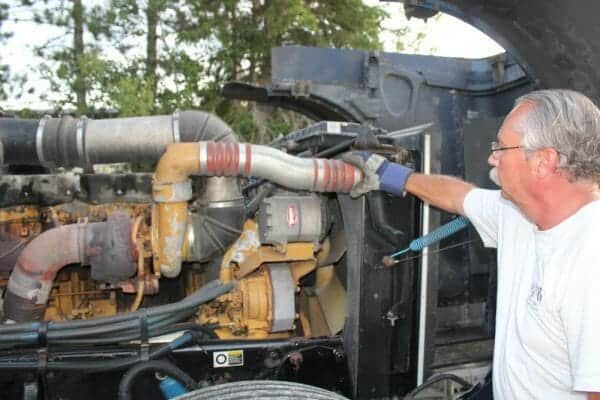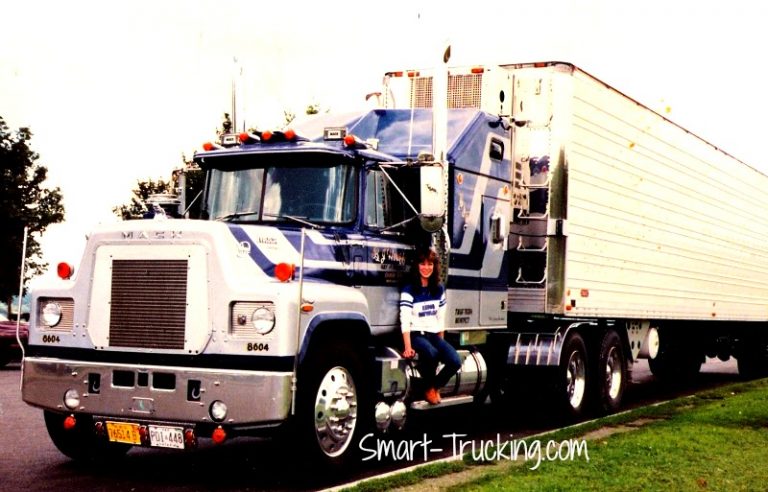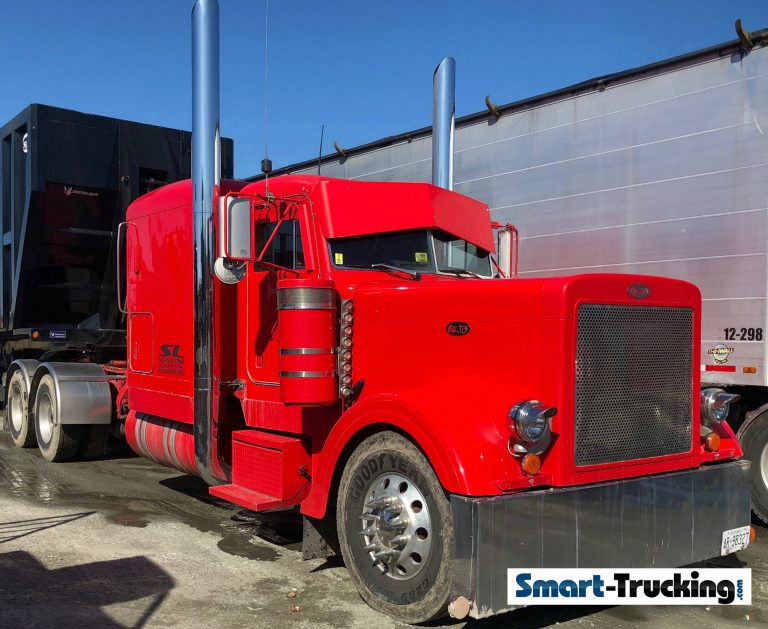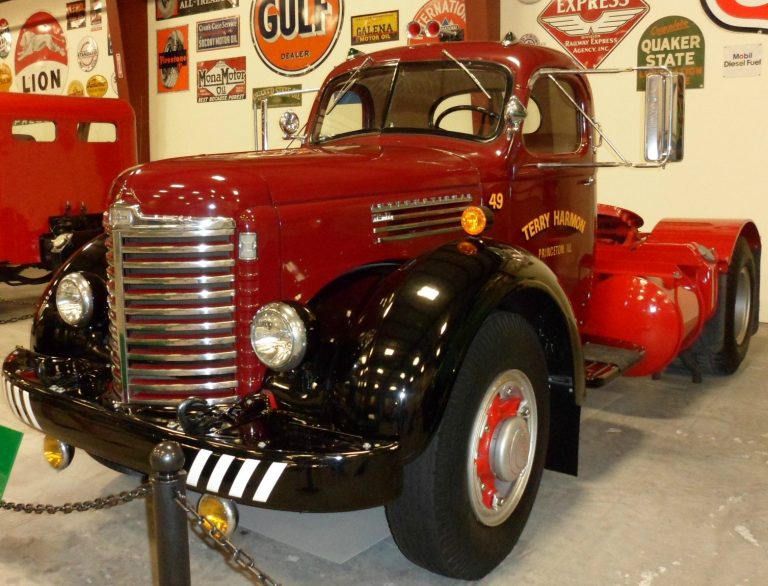Do It Yourself Semi Truck Repair Fix It Tips
Our semi truck repair tips and tricks may save you some money.
Bookmark this page of handy repair tips, tricks and advice for reference when you need some help diagnosing or fixing your rig.
We’ll add truck repair tips to the page as we accumulate them.
We’ll try to help you keep your truck out of the shop.
It’s always great to find ways to reduce your repair bills so you can keep more of your hard-earned money in your pocket, where it belongs.

Truck Repair Tips, Tricks
Clutch
Grinding Clutch Problem
For 2 years, I have changed 2 clutches. Driving the first 50,000 miles, everything seems to be fine.
After that, the problem starts with a grinding noise. First, it can be detected from the start and then when heavy, but later this noise is almost all the time, no matter if heavy, light or empty. What could be the problem? After spending a lot of money the problem is not resolved.
Answer: First, what shop changed the clutch?
Do you use the clutch regularly?
Is there a possibility the installed clutch could be the wrong one for the truck?
The clutch installed could be too light for the work the truck is doing. It should be under warranty up to one year.
Before the year is up, and if you’re over the 50,000 miles, the moment it starts to grind, take it back to the shop who installed it.
They ought to figure it out. Of course, this shouldn’t be happening for every clutch. Something is clearly wrong.
Related > The Complete Guide to Big Trucks
Engine

Losing Rad Fluid
I’m having a problem with losing radiator fluid, from my truck.
It loses about a half gallon a day.
The sensor was replaced and a leak was fixed at the shop, but every day I still need to add 3/4 gallon of fluid. The alarm also stays on.
The truck is a 2010, with about 230,000 miles.The fluid disappears while the truck is shut down. I can shut it down in the evening successfully.
When I wake up and start my pre-trip, I start the truck and low light is on and the coolant level is low.
However there is no fluid on the ground.
The rad fluid disappears when the truck is shut off. There is no sign of fluid on the ground.
Answer: Check the oil when the truck is cold for signs of coolant on the dipstick.
Many manufacturers set the low coolant sensor too high on the radiator. The rad has an overflow tube that could be draining the coolant to below the sensor level. This is more likely the case as your truck is relatively new.
The coolant could also be escaping into the engine or evaporating.
If there’s no coolant on the ground, and it’s disappearing when the truck is shut off, it’s most likely a head gasket.
If it’s not leaking externally, it’s leaking internally.
Take the truck to the engine manufacturer, like a Cummins or Cat shop or whatever your motor is, you didn’t say, NOT the truck dealer or just any dealer.
***IF the truck is an older model, this can be a sign of a head gasket needing attention.

Power Reduction Issue — Has anyone had problems with their truck going to reduced power after 250 thousand kms?
Answer: I never rely on sensors.
I always check my fluids, belts and brakes, also any leaks by hand before every trip.
Never completely trust these new sensors in trucks. I am old school…. do your walk around and keep an eye on the gauges.
**Electronic system may sense a problem.
Programming in new trucks is set in order to reduce power when the electronic system senses a problem.
The truck should be taken to a dealer right away. If the truck continues to reduce its own power, and the dealership continually finds nothing wrong other than a faulty sensor, you may wish to consider having the programming on the sensor changed by the dealer.
The dealer will just ‘blank out’ the sending units.
However, should you do this, you’ll need to manually check such things as rad and oil levels consistently.
How to Release the Brake Lock
How do I release the brake lock, once the brake is locked by losing air from the brake chamber?
Answer: Don’t mess with this yourself. Take it to a licensed mechanic a.s.a.p. Do not fool around with brake chambers.
Related >Best Truck Engines + The Worst – A Trucker’s Guide to Getting the Right Engine
Simple Truck Repair Do-It-Yourself
- Saves $$. By doing things yourself, you can save thousands in labor costs. If you don’t believe me, take a look at your next repair bill, parts verses labor. Cut the labour and that’s money in your pocket..
- Set up your truck for air tools. Setting it up for air tools is easy and inexpensive. Tooling up is also cheaper than the shop. Learn to do the easy stuff yourself. It’s not rocket science.
- Save $$ on tires buying volume. Tires are the second biggest expense. You can buy your tires at a good price and stock pile them at home and save money that way, plus with mount and dismount.
- Do not change your own oil unless you have a way to dispose of 11 gallons of used oil. That is way too costly.
- Change your own filters. You bet you can do that. Figure the shop is going to charge you a minimum of $60, just to change a $12 – $17 filter. Save all that cash for yourself.
- Know your equipment. Don’t always take the word of the shop mechanic as being totally right. I had a truck gel up on Rogers Pass in Montana at 1:00 am in January 1993. The mean temp was -42 F. The shop mechanic had done a repair on a cross-over line. He did not treat number 2 diesel in the tank that was shut off before the repair. When you are out in the middle of nowhere in temperatures like this, it can be very dangerous. Luck would have it someone stopped and took me into Lincoln Montana. Inspect everything on your truck and know it is road ready.
- Buy used parts at a salvage yard. For some parts this is a great way to save a lot of money
EGR Valve Money Saving Tip
My company runs ISX engines. The oldest year is 2001 and the newest is 2012.
The older engine with the EGR system has a problem with the EGR valves and coolers. Most dealers want to sell a rebuilt EGR valve and then the core charge return is about $ 120.
They send the “defective ” valve off to Mexico to be “rebuilt” in order that they get to resell it again and again.
This valve has been one of the expensive black holes for repair. Shops get anywhere from $900 to $1200 to replace it.
Do-It-Yourself for under $100 most times. In our shop, tear down of the valve shows soot, is the main problem (Out of 26 valves, only two had mechanical issues) Three cans of brake clean fixes our problems.
The valve is fairly simple to remove and clean. It takes about 3 hours and the truck is back in service. We have noticed a tread of replace the part or engine in most shops and it appears that this is driven by the possibility of being sued , so the “art” of repairing is disappearing as a result.
We have saved thousands in repair costs by rebuilding parts and engines ourselves, and yes we had to learn how, but Youtube is a great source for learning as well as service manual CD’s on ISX’s available on Ebay for less the 80 bucks.
Another thing…be sure to shop around for parts, just because the truck is a Peterbilt, Freightliner, or Kenworth, does not mean you have to buy the part from them.
TEC and Fleetpride can get the same parts OEM if you spec it or aftermarket, if price is a issue.
In short , self education can save you BIG bucks in today’s market.
Related > Essential Professional Driver Skills Instruction
Injector Cups Leaking Antifreeze Into Pistons
2010 ISX CM 870 engine 500hp operates 450 miles daily, pulls Super B train 126,000 lbs. The engine used 3/4 to 1 gallon of coolant every two days, since we had it installed by dealer.
The engine pulled well,no white smoke, no loss of power, no drips or leaks on the ground. No anti- freeze in the oil.
We pulled the pan to check this. Replaced EGR valve three times, EGR cooler twice, water pump and thermostats and the radiator.
Some of the work we did in-house but until warranty ran out, we had dealer looking at it. We took it to two other shops, and no joy there either.
No problem with starting or running until two months ago. The driver called in for a tow as the engine overheated on him.
The dealer shop replaced water pump and thermostats. It ran two days, then the same overheating issue.
We towed it to our shop let it sit overnight. The engine was hard start with white smoke. I thought, ‘Hmmm damn head gasket job’.
I pulled the cover off the head and saw a glimmer of green and thought that was strange.
Before I went deeper, I wondered if the injector cups were going bad. I pulled all the injectors and then pressurized the radiator to ten psi. I looked down the injector with a flashlight and found 5 of the six injector cups leaking antifreeze into the pistons.
Not a bad leak, just a couple of drops every five minutes or so. If it was any faster I think it would have hydro locked the engine over night.
As it was, I think the antifreeze was burning off until it developed into something we could find. Long story short, we replaced the head and no more leaks or loss of coolant.
It was a tough problem. It should have been caught by the dealer for warranty. I think they did the best they could with the symptoms.
It cost us a lot of money. It was an easy check once I thought about it, but neither I or the dealer or other shops thought to check the injector cups. We were focused on the BIG issues that could cause this.
Lesson to be passed on. We have about 12,000 miles in this problem, about 5,000 more then we should have. Plus there’s all the money the dealer spent. Not a common problem in my experience.
I hope this information can help someone else.





